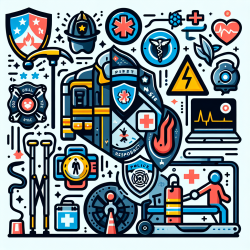The evolving field of human-robot interaction (HRI) has brought forward significant advancements in how social robots can be utilized to enhance various aspects of human life, especially in educational and therapeutic settings. A scoping review titled 10 Years of Human-NAO Interaction Research: A Scoping Review by Amirova et al. (2021) provides a comprehensive analysis of research involving the NAO robot from 2010 to 2020. This blog post aims to translate key findings from this extensive review into actionable insights for practitioners in speech language pathology and online therapy services, with a focus on creating great outcomes for children.
Key Insights from the Review
The review analyzed around 300 research works, providing both qualitative and quantitative results on the deployment of the NAO robot. Here are some critical takeaways:
- Wide Application: NAO has been used in diverse fields such as education, autism therapy, elderly care, and healthcare. This indicates its versatility and effectiveness in different settings.
- Human-Robot Roles: NAO often plays roles such as peer, tutor, and mediator, which are crucial in educational and therapeutic interactions.
- Interaction Types: The majority of studies involve one-on-one interactions, emphasizing the robot's role in personalized and focused engagement.
- Short-Term Engagement: Most studies are short-term, lasting around 15-30 minutes, which aligns well with the attention spans of young children.
Implementing Research Outcomes in Practice
Practitioners can leverage these insights to improve their services and outcomes for children. Here are some strategies:
1. Utilize NAO in Personalized Therapy Sessions
Given NAO's effectiveness in one-on-one interactions, it can be used to tailor therapy sessions to the individual needs of each child. The robot's ability to act as a peer or tutor can make learning and therapy more engaging and less intimidating for children.
2. Focus on Short, Interactive Sessions
Short-term interactions, as indicated by the research, are effective and manageable. Structuring therapy sessions to last between 15-30 minutes can help maintain the child's attention and maximize the effectiveness of the intervention.
3. Leverage NAO's Multimodal Communication
NAO's ability to communicate through speech, gestures, and visual cues can be used to enhance verbal and non-verbal communication skills in children. This is particularly beneficial for children with autism or other communication disorders.
4. Incorporate NAO in Group Settings
While most studies focus on dyadic interactions, incorporating NAO in small group settings can foster collaborative skills and social interaction among children. This can be particularly useful in classroom environments or group therapy sessions.
Encouraging Further Research
While the existing body of research provides valuable insights, there are still areas that require further exploration:
- Long-Term Studies: More long-term studies are needed to understand the sustained impact of NAO on child development and learning outcomes.
- Multi-Party Interactions: Research on NAO's effectiveness in multi-party interactions can provide insights into its role in group dynamics and collaborative learning.
- Personalization: Developing personalized interaction models that adapt to the unique needs and preferences of each child can enhance the effectiveness of therapy and learning sessions.
To read the original research paper, please follow this link: 10 Years of Human-NAO Interaction Research: A Scoping Review.










